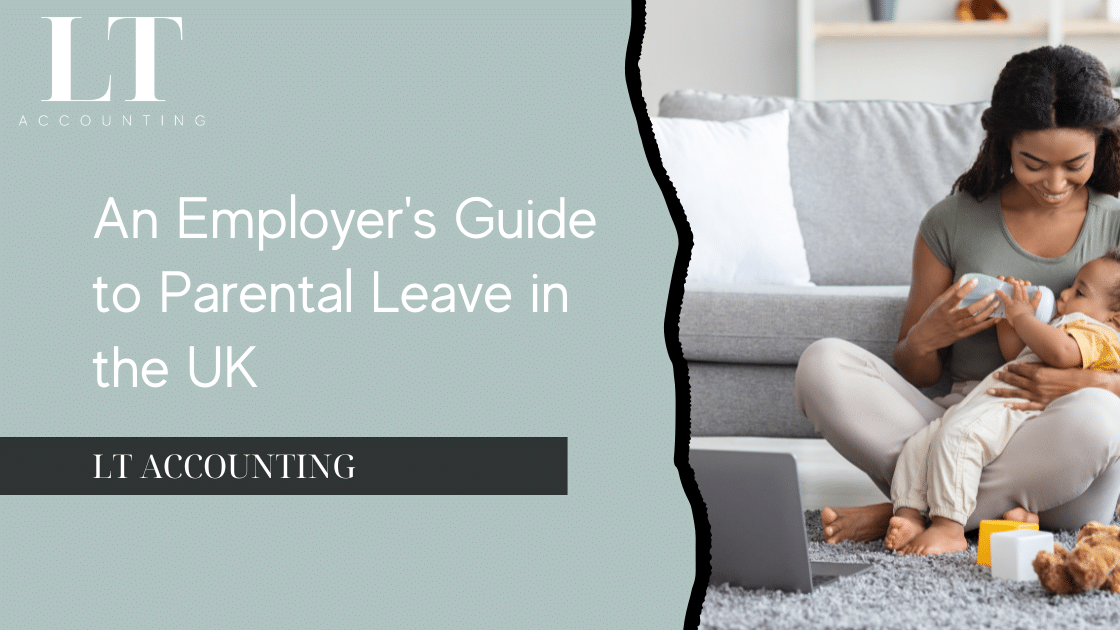In the rapidly evolving workplace of the United Kingdom, understanding parental leave is crucial for employers who strive to maintain a supportive and compliant environment. Navigating the complexities of legal obligations and fostering a workplace culture that supports employees during significant life events such as parenthood can be challenging. Yet, it remains a critical aspect of modern human resource management. This comprehensive guide aims to demystify the intricacies of parental leave in the UK, offering practical advice to employers on compliance, fostering a supportive workplace culture, and ultimately, enhancing employee satisfaction.
The significance of parental leave policies extends beyond legal compliance; it reflects an organisation’s values and commitment to its employees’ well-being and work-life balance. By comprehensively understanding and effectively managing parental leave, employers can not only adhere to legal standards but also attract and retain top talent, foster loyalty, and boost overall workplace morale. This guide will navigate you through the essentials of parental leave in the UK, from statutory entitlements to best practices in policy implementation, ensuring your approach as an employer is both legally sound and culturally supportive.
Understanding Parental Leave in the UK
Parental leave in the United Kingdom encompasses various forms of leave available to parents and caregivers, allowing them the time and flexibility to care for their children while safeguarding their employment. The UK government has established statutory entitlements to support working parents, which include maternity leave, paternity leave, adoption leave, and shared parental leave. Each of these entitlements is designed with specific eligibility criteria and offers different lengths of leave and pay levels, reflecting the diverse needs of families.
- Maternity Leave: Pregnant employees are entitled to up to 52 weeks of maternity leave, with the first 39 weeks potentially paid. Employers are required to support employees by ensuring they are aware of their rights and the processes to claim maternity leave and pay.
- Paternity Leave: New fathers or partners have the right to one or two weeks of paid paternity leave, providing they meet eligibility criteria related to their employment duration and their relationship with the child.
- Adoption Leave: Similar to maternity leave, employees who adopt a child are entitled to up to 52 weeks of leave, with the first 39 weeks paid. This ensures adoptive parents have time to bond with their child while maintaining financial support.
- Shared Parental Leave: This relatively new entitlement allows parents to share up to 50 weeks of leave and up to 37 weeks of pay. It offers flexibility in how parents can share the care of their child in the first year following birth or adoption.
Understanding these entitlements is the first step for employers in navigating the complexities of parental leave. However, it’s not just about legal compliance; it’s also about understanding the impact of these policies on employees’ lives and the positive effects that supportive parental leave policies can have on workplace culture and employee satisfaction. Employers must stay informed about their legal obligations and the operational implications of parental leave, ensuring they can effectively manage these aspects within their organisations.
In the next section, we will delve deeper into the specific obligations and rights of employers and employees concerning parental leave, highlighting the importance of a well-managed approach to parental leave policies.
Employer Obligations and Rights
Navigating the landscape of parental leave in the UK requires employers to have a deep understanding of their legal obligations, as well as the rights of their employees. This understanding is pivotal not only for ensuring compliance with the law but also for building a supportive workplace environment that values and supports employees during significant life events.
Employer Obligations
- Notification and Documentation: Employers must provide clear instructions on how to apply for parental leave and what documentation is required. This process includes deadlines for notifying the employer about the intended leave, which varies depending on the type of leave being taken.
- Maintaining Employment Rights: Employees on parental leave maintain their employment rights, such as the right to return to the same job or a similar job with equivalent terms and conditions, protection against unfair dismissal, and accrual of holiday entitlement.
- Statutory Pay: Employers are responsible for administering statutory maternity pay (SMP), statutory paternity pay (SPP), statutory adoption pay (SAP), and shared parental pay (ShPP), ensuring eligible employees receive their entitled pay.
Employee Rights
- Eligibility for Leave: Employees have the right to take parental leave if they meet certain eligibility criteria, such as length of service and employment status.
- Protection from Discrimination: Employees are protected from any form of discrimination, disadvantage, or dismissal as a result of taking or seeking to take parental leave.
- Flexible Working Requests: Following parental leave, employees have the right to request flexible working arrangements, which employers must consider reasonably.
Managing Requests for Parental Leave
Handling requests for parental leave involves a careful balance between supporting the employee and managing the operational needs of the business. Employers should:
- Establish Clear Policies: Have a transparent, written policy on parental leave, easily accessible to all employees, detailing the process for applying, the rights of employees, and the obligations of the employer.
- Communicate Effectively: Ensure open lines of communication with the employee taking leave, discussing expectations and plans for their absence and return to work.
- Plan for Coverage: Develop a plan to cover the duties of the employee on leave, which may include temporary reassignment of tasks, hiring temporary staff, or training other employees to cover essential functions.
Best Practices for Employers
Adopting best practices in managing parental leave not only ensures legal compliance but also enhances employee satisfaction and loyalty. These include:
- Flexibility: Offering more generous leave options or flexibility in how leave is taken can help in attracting and retaining talent.
- Support Systems: Implementing support systems, such as keeping-in-touch days or phased return-to-work programs, can ease the transition for employees returning from parental leave.
- Education and Training: Providing training for managers and HR personnel on handling parental leave requests and creating a supportive environment for returning employees.
Understanding and fulfilling employer obligations, respecting employee rights, and managing parental leave requests effectively are crucial components of navigating parental leave in the UK. These practices not only ensure legal compliance but also contribute to creating a supportive, inclusive, and productive workplace culture.
In the following section, we’ll explore strategies for fostering a supportive workplace culture that embraces parental leave as an integral part of employee welfare and organisational success.
Fostering a Supportive Workplace Culture
Creating a workplace culture that supports parental leave is essential for modern businesses aiming to attract and retain top talent. A supportive culture not only aligns with legal obligations but also demonstrates a commitment to employee well-being, leading to higher job satisfaction, loyalty, and productivity. Here are strategies and insights into fostering an environment where parental leave policies are not just adhered to but are a cornerstone of the company’s ethos.
1. Promote Open Communication
Encourage an open dialogue about parental leave policies and practices within the organisation. This includes providing clear information about entitlements and processes, as well as fostering an environment where employees feel comfortable discussing their plans and any concerns related to parental leave. Regularly updating staff on any changes to legislation or company policies ensures everyone is informed and prepared.
2. Lead with Empathy and Understanding
Managers and HR professionals should be trained to approach parental leave conversations with empathy, recognising the significant life event their employees are experiencing. This approach helps in building trust and assures employees that their welfare is a priority. Empathetic leadership encourages a more inclusive and supportive workplace culture.
3. Implement Flexible Working Arrangements
Flexible working arrangements are increasingly important for parents returning to work after leave. Offering part-time roles, flexible hours, remote working options, or phased returns can make the transition smoother for new parents. These practices signal a supportive culture that values work-life balance.
4. Establish Support Networks
Creating internal support networks or forums for parents can provide additional layers of support. Such networks offer a space for sharing experiences, advice, and resources, fostering a sense of community and belonging. Mentoring programs for returning parents can also be beneficial, pairing them with colleagues who have navigated similar experiences.
5. Recognise and Celebrate Family
Acknowledging significant family milestones within the workplace can further enhance a supportive culture. Celebrating events like new births or adoptions with simple gestures can make employees feel valued and supported, reinforcing the organisation’s commitment to their personal lives.
6. Provide Training and Resources
Offering training sessions on parental rights, entitlements, and the company’s specific policies ensures that both managers and employees are well-informed. Resources such as checklists, FAQs, or guides on navigating parental leave can empower employees to manage their leave confidently.
7. Regularly Review and Adapt Policies
Continuously evaluate and adapt parental leave policies to reflect changes in legislation, societal norms, and employee feedback. Engaging employees in discussions about what works and what could be improved ensures that policies remain relevant and supportive.
Case Studies of Success
Highlighting examples of businesses that excel in supporting parental leave can provide valuable insights and inspiration. Companies that go above and beyond statutory requirements, such as offering enhanced leave benefits, additional support services, or innovative return-to-work programs, set a benchmark for best practices in fostering a supportive workplace culture.
By prioritising a supportive approach to parental leave, employers can significantly impact employee satisfaction and engagement. A culture that values and supports employees through major life events is more likely to foster loyalty, reduce turnover, and enhance the overall productivity and morale of the workforce.
Next, we will delve into how enhancing employee satisfaction through parental leave policies not only benefits employees but also contributes to the long-term success of the organisation.
Enhancing Employee Satisfaction Through Parental Leave Policies
Parental leave policies are not just a statutory requirement; they’re a pivotal element in the strategy to enhance employee satisfaction and retention. Progressive organisations recognise that providing supportive, flexible, and inclusive parental leave policies goes a long way in building a loyal, motivated, and productive workforce. Here’s how enhancing parental leave policies can positively impact employee satisfaction and contribute to the broader success of the organisation.
1. Going Beyond Statutory Requirements
Organisations that offer parental leave benefits surpassing the statutory minimum demonstrate a genuine commitment to their employees’ well-being. This could include extended leave durations, higher pay during leave, or additional benefits such as return-to-work bonuses. Such policies not only attract top talent but also significantly increase job satisfaction and loyalty among current employees.
2. Impact on Employee Retention
The period following the birth or adoption of a child is a time when employees reassess their work-life balance and career choices. Supportive parental leave policies can be a determining factor in their decision to return to work and remain with the company long-term. By reducing turnover, organisations save on the costs associated with recruiting and training new employees, thereby investing in a stable and experienced workforce.
3. Enhancing Company Reputation
A company known for its supportive approach to parental leave gains a competitive edge in the job market. Such a reputation makes it an employer of choice for prospective employees who value family-friendly workplace policies. This is particularly relevant in industries where competition for skilled professionals is high.
4. Promoting Gender Equality
By encouraging both parents to take leave, companies can play a crucial role in promoting gender equality in the workplace and at home. Shared parental leave policies, in particular, help to challenge traditional gender roles and contribute to a more equitable distribution of caregiving responsibilities. This not only benefits individual families but also supports the broader societal shift towards gender equality.
5. Boosting Productivity and Morale
Employees who feel supported during major life transitions are more likely to be engaged and productive when they return to work. Knowing that their employer values their well-being and family life can boost morale, foster a positive workplace culture, and enhance overall job satisfaction. Furthermore, employees who are well-rested and not stressed about rushing back to work tend to perform better, contributing to the organisation’s success.
6. Continuous Improvement through Feedback
Soliciting and acting on feedback from employees about their parental leave experience is crucial for continuous improvement. Regularly reviewing policies and practices to address any gaps or challenges ensures that the organisation remains responsive to the needs of its workforce. This ongoing dialogue fosters a culture of trust and respect, further enhancing employee satisfaction.
Conclusion
In conclusion, employers that view parental leave policies not merely as a legal obligation but as an opportunity to support their employees’ well-being and work-life balance will see significant benefits. Enhanced parental leave policies contribute to higher employee satisfaction, retention, and a positive company reputation, which are essential for long-term organizational success. By implementing thoughtful, inclusive, and flexible parental leave practices, employers can create a supportive workplace culture that values and nurtures its workforce, leading to mutual benefits for both employees and the organisation.
In the next section, we’ll explore the challenges and complexities of navigating parental leave policies and how employers can effectively address these to maintain compliance and support their employees.
Navigating Challenges and Complexities
Implementing and managing parental leave policies in the UK involves navigating a series of challenges and complexities that can impact both the employer and the workforce. From ensuring compliance with ever-evolving legal requirements to managing the operational implications of extended leaves, employers must adopt strategic approaches to maintain a supportive environment while safeguarding the organisation’s interests. This section outlines common challenges and provides guidance on how to address them effectively.
1. Compliance with Changing Legislation
Legal requirements surrounding parental leave can change, necessitating employers to stay informed and update policies accordingly. The challenge lies in interpreting these laws correctly and integrating them into existing company policies without causing disruption.
- Solution: Regularly review legal updates and consult with HR professionals or legal advisors specialising in employment law. Implementing a system for tracking legislative changes can help ensure ongoing compliance.
2. Operational Impact of Leave
Extended parental leave can pose operational challenges, especially in small teams or for critical roles. Planning for the absence of key personnel requires foresight and effective resource management.
- Solution: Develop a comprehensive leave management plan that includes cross-training staff, identifying temporary replacements, or considering flexible work arrangements. Creating a talent pool of freelancers or part-time workers can also provide flexibility.
3. Maintaining Fairness and Consistency
Ensuring that parental leave policies are applied fairly and consistently across the organisation can be challenging, especially in larger or geographically dispersed companies.
- Solution: Standardise procedures for requesting and approving leave and ensure that all managers are trained on these processes. Regular audits of leave requests and approvals can help identify and address any inconsistencies.
4. Supporting Return to Work
The transition back to work can be difficult for employees after a lengthy period of parental leave. Employers must manage this transition in a way that supports the returning employee while minimising disruption to the team.
- Solution: Implement return-to-work programs that may include phased returns, flexible working options, or catch-up training sessions. Providing a mentor or a buddy system can also ease this transition.
5. Balancing Flexibility with Business Needs
Offering flexibility in parental leave arrangements is crucial for supporting employees, but it must be balanced with the organisation’s operational requirements.
- Solution: Engage in open dialogue with employees to understand their needs and preferences while clearly communicating any business constraints. Finding a compromise that supports both the employee and the business is often possible with creative scheduling and temporary adjustments to workloads.
6. Addressing Cultural and Perceptual Barriers
In some workplace cultures, taking full advantage of parental leave, especially by fathers or adoptive parents, may be stigmatised or undervalued.
- Solution: Foster a culture that values and encourages taking parental leave through leadership example, awareness campaigns, and positive reinforcement. Highlighting success stories and testimonials can help change perceptions and encourage more employees to utilise their entitlements fully.
Conclusion
Navigating the complexities of parental leave requires a proactive, informed, and flexible approach. By addressing these challenges head-on, employers can ensure compliance, support their employees effectively, and mitigate any potential operational impacts. The ultimate goal is to create a workplace that not only meets legal obligations but also supports the well-being and career progression of all employees, thereby contributing to a positive and inclusive organisational culture.
In the final section, we’ll recap the key points covered in this comprehensive guide and reinforce the importance of supportive parental leave policies as an investment in the workforce and the overall success of the business.





